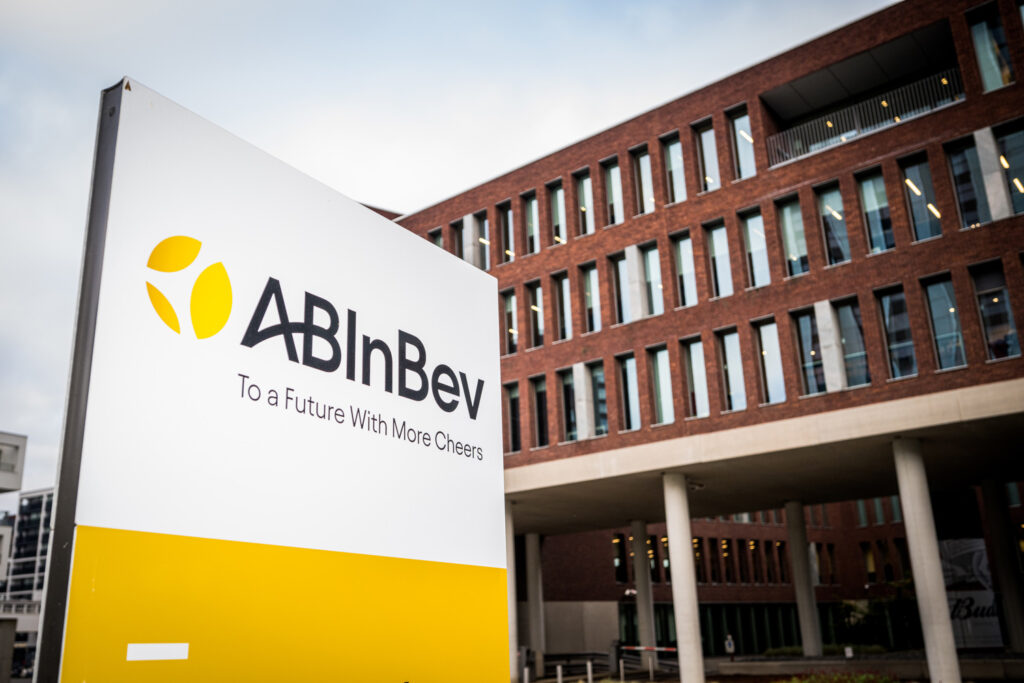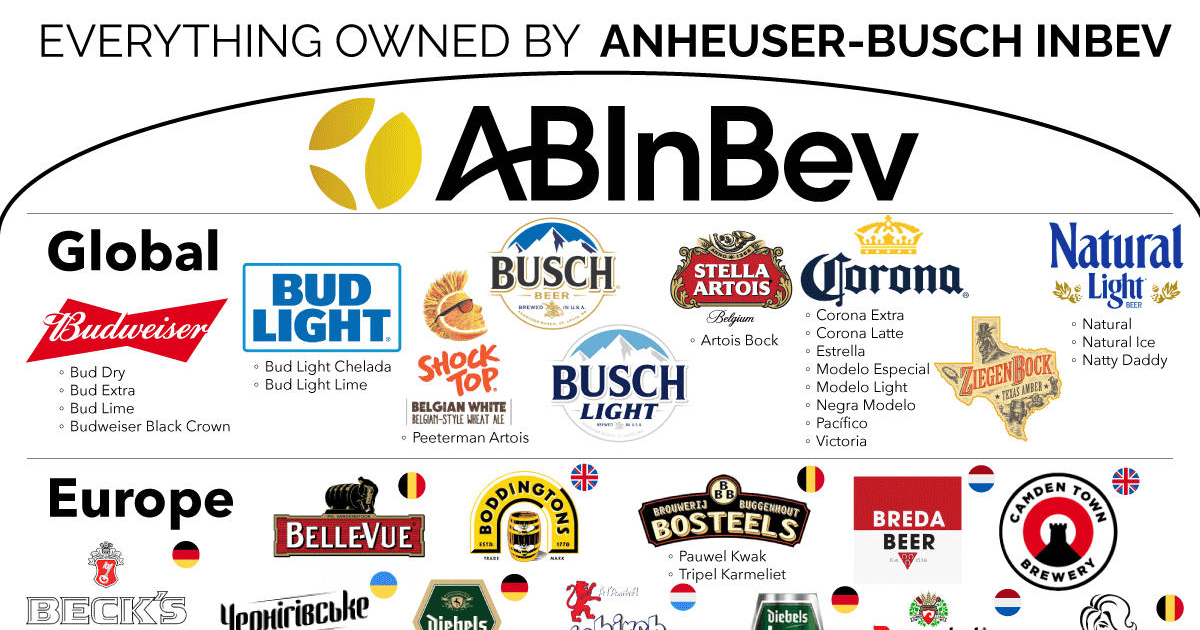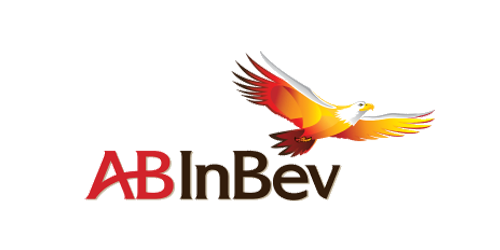AB InBev (NYSE:BUD) Q2 2024 Earnings Preview

- AB InBev's revenues are projected to be around $15.2 billion, a slight increase of 0.6% from the previous year, with earnings anticipated to hit 84 cents per share, marking a significant rise of 16.7%.
- The company's strategic focus on premium beer variants and the expansion of its Beyond Beer portfolio are expected to drive volume gains despite challenges such as increased costs due to commodity price inflation and higher supply-chain expenses.
- Financial metrics such as the price-to-earnings (P/E) ratio of approximately 19.06, and an earnings yield of about 5.25% reflect investor confidence and the company's solid financial standing.
AB InBev (NYSE:BUD), a leading global brewer, is gearing up to announce its second-quarter earnings for 2024 on August 1. The company, known for its extensive portfolio of beer and other beverages, is expected to show growth in both revenue and earnings compared to the same period last year. According to Zacks Consensus Estimate, AB InBev's revenues are projected to be around $15.2 billion, a slight increase of 0.6% from the previous year, with earnings anticipated to hit 84 cents per share, marking a significant rise of 16.7%.
The anticipated growth in AB InBev's performance can be attributed to several factors. Strong consumer demand for its diverse brand portfolio, coupled with effective pricing strategies and ongoing premiumization efforts, are expected to be key drivers. Additionally, the company's investments in brand development and a push towards digital transformation are likely to enhance its market share in crucial markets. The resilience of the global beer category further supports the optimistic outlook for BUD's second-quarter results.
Financial metrics such as the price-to-earnings (P/E) ratio, which stands at approximately 19.06, highlight investor willingness to pay for earnings, reflecting confidence in the company's profitability. The price-to-sales (P/S) ratio of about 1.62 and the enterprise value to sales (EV/Sales) ratio of approximately 1.76 provide insights into the company's valuation in relation to its sales. Moreover, the enterprise value to operating cash flow (EV/OCF) ratio of around 9.97 indicates the company's valuation compared to its operating cash flow, suggesting a solid financial standing. An earnings yield of about 5.25% offers a glimpse into the potential return on investment for shareholders.
Despite facing challenges such as increased costs due to commodity price inflation and higher supply-chain expenses, AB InBev's strategic focus on premium beer variants and the expansion of its Beyond Beer portfolio are expected to drive volume gains. These initiatives, along with efforts in digital platform expansion and portfolio diversification, are poised to positively impact the company's top and bottom lines in the reported quarter. However, it's important to note that Zacks' model does not conclusively predict an earnings beat for AB InBev this time, given its Zacks Rank #4 (Sell) and an Earnings ESP of +0.32%.
| Symbol | Price | %chg |
|---|---|---|
| MLBI.JK | 5750 | 0 |
| FEMSAUBD.MX | 197.09 | -0.54 |
| 2502.T | 1929 | -0.57 |
| CCU.SN | 6339 | -0.14 |

Anheuser-Busch Tops Q1 Estimates as South America Strength Offsets Weak U.S. and China
Anheuser-Busch InBev (NYSE:BUD) delivered better-than-expected first-quarter results on Thursday, driven by robust growth in South America and reduced financing costs, helping to counter weaker performances in North America and China.
The company reported revenue of $14.55 billion, reflecting 2.6% organic growth year-over-year and topping the consensus estimate of $14.36 billion. EBITDA rose 5.4% organically to $5.02 billion, ahead of the $4.91 billion analysts had projected.
Earnings per share came in at €0.85, beating expectations by 11%, with analysts attributing the surprise primarily to lower financial expenses during the quarter.
The company highlighted the resilience of its diversified geographic footprint, with solid gains in South America helping to offset softer results in Asia-Pacific and North America. While volumes declined 2.6% globally, revenue per hectoliter improved by 5.3%, indicating strong pricing power.
AB InBev reaffirmed its full-year guidance for 4% to 8% organic EBITDA growth, consistent with its longer-term strategic targets. Current consensus is anchored at 6.1%, keeping expectations firmly in the middle of that range.

Anheuser-Busch Tops Q1 Estimates as South America Strength Offsets Weak U.S. and China
Anheuser-Busch InBev (NYSE:BUD) delivered better-than-expected first-quarter results on Thursday, driven by robust growth in South America and reduced financing costs, helping to counter weaker performances in North America and China.
The company reported revenue of $14.55 billion, reflecting 2.6% organic growth year-over-year and topping the consensus estimate of $14.36 billion. EBITDA rose 5.4% organically to $5.02 billion, ahead of the $4.91 billion analysts had projected.
Earnings per share came in at €0.85, beating expectations by 11%, with analysts attributing the surprise primarily to lower financial expenses during the quarter.
The company highlighted the resilience of its diversified geographic footprint, with solid gains in South America helping to offset softer results in Asia-Pacific and North America. While volumes declined 2.6% globally, revenue per hectoliter improved by 5.3%, indicating strong pricing power.
AB InBev reaffirmed its full-year guidance for 4% to 8% organic EBITDA growth, consistent with its longer-term strategic targets. Current consensus is anchored at 6.1%, keeping expectations firmly in the middle of that range.

Anheuser-Busch InBev SA/NV's Commitment to Disaster Relief and Financial Health
- Anheuser-Busch InBev SA/NV (NYSE:BUD) has produced its 100 millionth can of emergency drinking water for disaster-affected communities, highlighting its commitment to disaster relief.
- The company is investing over $6 million in its Fort Collins, Colorado brewery to enhance brewing and packaging capabilities ahead of its quarterly earnings release on May 8, 2025.
- Anheuser-Busch's financial metrics, including a price-to-earnings ratio of 22.43 and a price-to-sales ratio of 2.12, reflect investor confidence in its earnings and sales generation capabilities.
Anheuser-Busch InBev SA/NV, trading as NYSE:BUD, is a leading American beverage company known for its popular beer brands like Budweiser and Stella Artois. The company has achieved a significant milestone by producing its 100 millionth can of emergency drinking water for disaster-affected communities since 1988. This effort underscores Anheuser-Busch's commitment to disaster relief, in partnership with the American Red Cross.
In line with this milestone, Anheuser-Busch is investing over $6 million in its Fort Collins, Colorado brewery to enhance its brewing and packaging capabilities. This investment aligns with the company's financial health, as it prepares to release its quarterly earnings on May 8, 2025. Analysts estimate an earnings per share of $0.77 and a projected revenue of $13.8 billion.
The company's breweries in Fort Collins, Colorado, and Cartersville, Georgia, are proactive in producing emergency drinking water, ensuring readiness for disaster response. Anheuser-Busch's financial metrics, such as a price-to-earnings ratio of 22.43 and a price-to-sales ratio of 2.12, reflect investor confidence in its ability to generate earnings and sales.
Anheuser-Busch's annual campaign to deliver 1.5 million cans of emergency drinking water to volunteer fire departments across 45 states highlights its commitment to community welfare. The company's enterprise value to sales ratio of 3.14 and enterprise value to operating cash flow ratio of 15.04 provide insight into its valuation and cash flow generation capabilities.
Despite a debt-to-equity ratio of 0.92, indicating moderate leverage, Anheuser-Busch's efforts in disaster preparedness and community support remain strong. However, a current ratio of 0.70 suggests potential liquidity challenges in meeting short-term obligations, emphasizing the importance of strategic financial management.

Anheuser-Busch InBev SA/NV's Commitment to Disaster Relief and Financial Health
- Anheuser-Busch InBev SA/NV (NYSE:BUD) has produced its 100 millionth can of emergency drinking water for disaster-affected communities, highlighting its commitment to disaster relief.
- The company is investing over $6 million in its Fort Collins, Colorado brewery to enhance brewing and packaging capabilities ahead of its quarterly earnings release on May 8, 2025.
- Anheuser-Busch's financial metrics, including a price-to-earnings ratio of 22.43 and a price-to-sales ratio of 2.12, reflect investor confidence in its earnings and sales generation capabilities.
Anheuser-Busch InBev SA/NV, trading as NYSE:BUD, is a leading American beverage company known for its popular beer brands like Budweiser and Stella Artois. The company has achieved a significant milestone by producing its 100 millionth can of emergency drinking water for disaster-affected communities since 1988. This effort underscores Anheuser-Busch's commitment to disaster relief, in partnership with the American Red Cross.
In line with this milestone, Anheuser-Busch is investing over $6 million in its Fort Collins, Colorado brewery to enhance its brewing and packaging capabilities. This investment aligns with the company's financial health, as it prepares to release its quarterly earnings on May 8, 2025. Analysts estimate an earnings per share of $0.77 and a projected revenue of $13.8 billion.
The company's breweries in Fort Collins, Colorado, and Cartersville, Georgia, are proactive in producing emergency drinking water, ensuring readiness for disaster response. Anheuser-Busch's financial metrics, such as a price-to-earnings ratio of 22.43 and a price-to-sales ratio of 2.12, reflect investor confidence in its ability to generate earnings and sales.
Anheuser-Busch's annual campaign to deliver 1.5 million cans of emergency drinking water to volunteer fire departments across 45 states highlights its commitment to community welfare. The company's enterprise value to sales ratio of 3.14 and enterprise value to operating cash flow ratio of 15.04 provide insight into its valuation and cash flow generation capabilities.
Despite a debt-to-equity ratio of 0.92, indicating moderate leverage, Anheuser-Busch's efforts in disaster preparedness and community support remain strong. However, a current ratio of 0.70 suggests potential liquidity challenges in meeting short-term obligations, emphasizing the importance of strategic financial management.

Anheuser-Busch InBev Surges 8% on Strong Q4 Earnings, Raises Dividend
Anheuser-Busch InBev (NYSE:BUD) delivered a robust fourth-quarter performance, exceeding analyst expectations and driving its stock up more than 8% intra-day on Wednesday. The company marked its third straight year of hitting the high end of its guidance, underscoring consistent financial strength.
The company reported a 10.1% increase in EBITDA, outpacing the expected 7.7% growth. Full-year earnings per share landed at $3.53, surpassing the $3.34 consensus estimate, fueled by strong profit expansion and favorable financial adjustments.
Key markets contributed significantly to the upbeat results, with EBITDA surging 11.3% in South America and 16.3% in the EMEA region. Free cash flow also showed meaningful improvement, helping net debt to EBITDA decline to 2.89x, ahead of the projected 3x, positioning the company for greater financial flexibility. This strengthened balance sheet allowed ABI to boost its dividend to €1 per share, exceeding investor expectations.
While organic volumes dipped 1.9%, falling slightly below the -1.3% consensus estimate, revenue climbed 3.4%, surpassing the 2.4% forecast—a reflection of strategic pricing and product mix improvements.
For fiscal year 2025, the company reaffirmed its EBITDA growth outlook of 4-8%, aligning with its long-term targets. Additionally, net pension interest and accretion expenses are projected to decline, reducing from $220-250 million per quarter to $190-220 million, as ABI continues to chip away at its debt obligations.

Anheuser-Busch InBev Surges 8% on Strong Q4 Earnings, Raises Dividend
Anheuser-Busch InBev (NYSE:BUD) delivered a robust fourth-quarter performance, exceeding analyst expectations and driving its stock up more than 8% intra-day on Wednesday. The company marked its third straight year of hitting the high end of its guidance, underscoring consistent financial strength.
The company reported a 10.1% increase in EBITDA, outpacing the expected 7.7% growth. Full-year earnings per share landed at $3.53, surpassing the $3.34 consensus estimate, fueled by strong profit expansion and favorable financial adjustments.
Key markets contributed significantly to the upbeat results, with EBITDA surging 11.3% in South America and 16.3% in the EMEA region. Free cash flow also showed meaningful improvement, helping net debt to EBITDA decline to 2.89x, ahead of the projected 3x, positioning the company for greater financial flexibility. This strengthened balance sheet allowed ABI to boost its dividend to €1 per share, exceeding investor expectations.
While organic volumes dipped 1.9%, falling slightly below the -1.3% consensus estimate, revenue climbed 3.4%, surpassing the 2.4% forecast—a reflection of strategic pricing and product mix improvements.
For fiscal year 2025, the company reaffirmed its EBITDA growth outlook of 4-8%, aligning with its long-term targets. Additionally, net pension interest and accretion expenses are projected to decline, reducing from $220-250 million per quarter to $190-220 million, as ABI continues to chip away at its debt obligations.

AB InBev's Market Outlook and Price Target Adjustment by Morgan Stanley
- Morgan Stanley sets a new price target of $63 for NYSE:BUD, indicating a potential 35% increase.
- The adjustment reflects recent market data and foreign exchange rates, with an Overweight rating maintained.
- Despite recent volatility and a decrease in share price, AB InBev shows potential for growth and "very attractive" cash returns in the latter half of the year.
AB InBev, listed on the NYSE under the symbol BUD, is a leading global brewer known for its extensive portfolio of beer brands. The company operates in various markets worldwide, facing competition from other major brewers like Heineken and Molson Coors. On January 9, 2025, Morgan Stanley's Sarah Simon set a price target of $63 for BUD, suggesting a potential 35% increase from its then-current price of $46.41.
Sarah Simon's revised price target of $63, down from $68.50, reflects recent market data and foreign exchange rates impacting AB InBev's profitability. Despite the adjustment, Simon maintains an Overweight rating, indicating confidence in the stock's potential.
The stock's recent performance shows a fluctuation between $46.10 and $48.38, with a 52-week high of $67.49 and a low of $46.10. This volatility highlights the challenges and opportunities in the market. AB InBev's market capitalization stands at approximately $91.58 billion, reflecting its significant presence in the industry.
Despite the potential for "very attractive" cash returns, Morgan Stanley anticipates more substantial growth and share price performance in the latter half of the year. This outlook has led to the removal of AB InBev as Morgan Stanley's "Top Pick" in the Beverages sector, as highlighted by the firm, due to better near-term opportunities elsewhere.
The trading volume for BUD is 5,487,167 shares, indicating active investor interest. As the year progresses, investors will likely monitor AB InBev's performance closely, considering the potential for growth and the impact of market conditions on its profitability.







